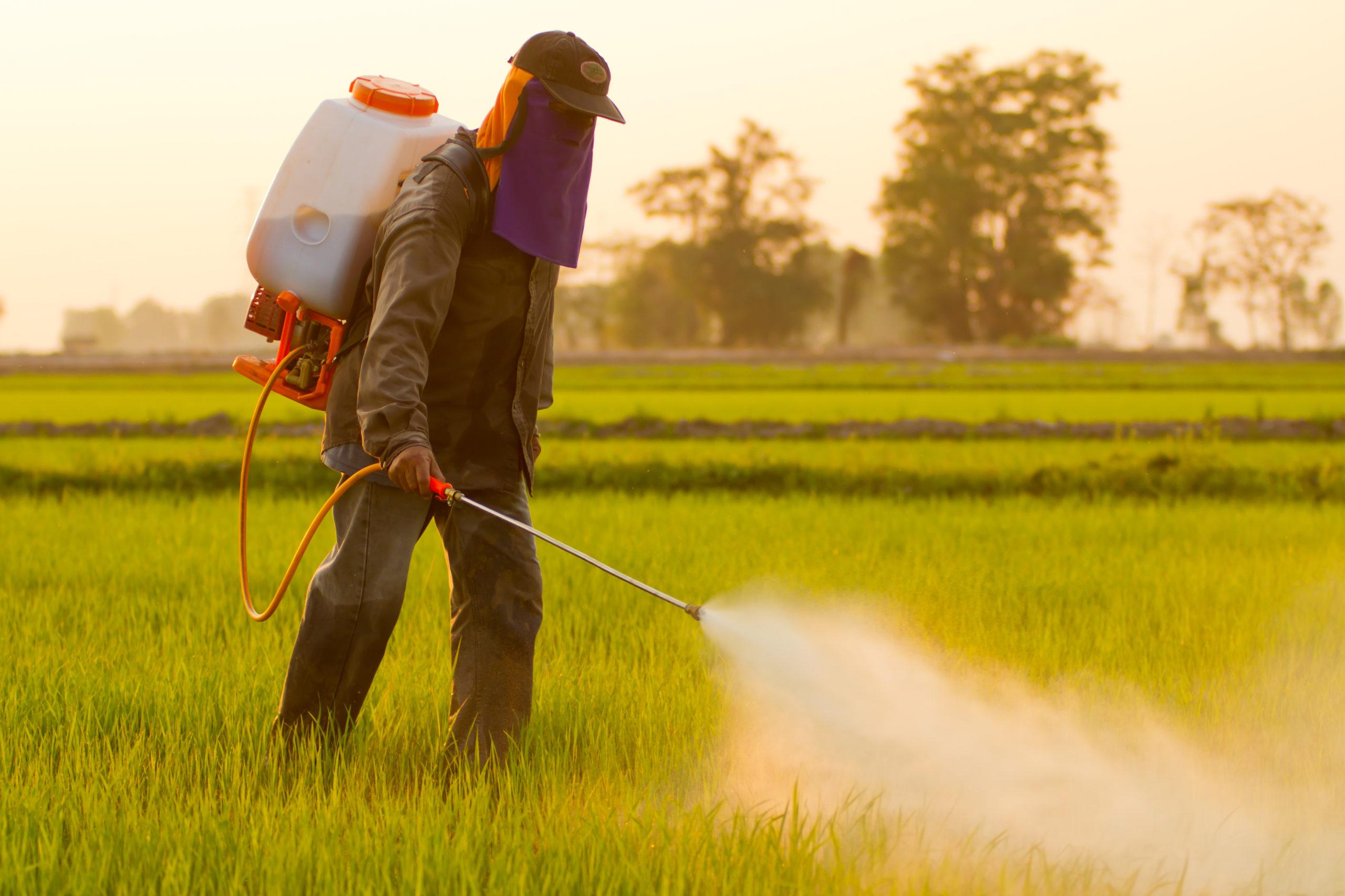Home>Gardening News and Trends>Why Is A Greenhouse A Good Analogy For WhatS Happening In The Atmosphere


Gardening News and Trends
Why Is A Greenhouse A Good Analogy For WhatS Happening In The Atmosphere
Modified: January 22, 2024
Discover the latest news on why a greenhouse is a perfect analogy for the current state of the atmosphere. Explore the effects and implications of this phenomenon.
(Many of the links in this article redirect to a specific reviewed product. Your purchase of these products through affiliate links helps to generate commission for Chicagolandgardening.com, at no extra cost. Learn more)
Table of Contents
- Introduction
- What is a Greenhouse?
- The Analogy between a Greenhouse and the Atmosphere
- Greenhouse Gases and Their Role in the Atmosphere
- The Greenhouse Effect and Global Warming
- Impact of Human Activities on the Greenhouse Effect
- Consequences of the Greenhouse Effect on Earth’s Climate
- Measures to Mitigate the Greenhouse Effect
- Conclusion
Introduction
Welcome to the world of greenhouses, where plants thrive in an environment carefully controlled to optimize their growth. But what if I told you that this concept of a greenhouse can also be used as an analogy to understand what’s happening in the Earth’s atmosphere?
A greenhouse is a structure made of glass or plastic that traps heat from the sun, creating a warm and humid microclimate for plants to flourish. Similarly, the Earth’s atmosphere acts as a natural greenhouse, trapping heat and regulating the planet’s temperature to sustain life.
This analogy allows us to comprehend the complex interactions taking place in the atmosphere and how they impact our planet. By delving into the science behind greenhouses and drawing parallels with the Earth’s atmosphere, we can better comprehend concepts such as the greenhouse effect and global warming.
In this article, we will explore the greenhouse analogy in more detail and understand the role played by greenhouse gases in the atmosphere. We will examine the greenhouse effect, the impact of human activities on this phenomenon, and the consequences of an intensified greenhouse effect on Earth’s climate. Finally, we will discuss potential measures to mitigate the greenhouse effect and safeguard our planet’s future.
So, buckle up and get ready to delve into the fascinating world of greenhouses and the remarkable parallels they share with our ever-changing atmosphere.
What is a Greenhouse?
A greenhouse is a specially designed structure made of glass or plastic that is used to create an environment suitable for plants to grow. It works by capturing and trapping heat from the sun, creating a warm and controlled atmosphere for plant cultivation.
The primary purpose of a greenhouse is to provide a sheltered environment that shields plants from extreme weather conditions such as frost, excessive heat, or heavy rainfall. By controlling factors like temperature, humidity, and sunlight exposure, greenhouse operators can optimize plant growth and protect crops.
Greenhouses come in various sizes and designs, ranging from small backyard units to expansive commercial operations. The structure is typically made of transparent materials like glass or plastic that allow sunlight to enter. The structure is also equipped with ventilation systems to regulate temperature and ensure proper air circulation.
By creating a microclimate within the greenhouse, plants can thrive in conditions that may be unfavorable or even impossible to achieve in an open environment. This controlled environment allows for year-round cultivation and extends growing seasons, making it possible to produce a wide variety of crops even in regions with harsh climates.
Inside a greenhouse, various techniques can be employed to further optimize plant growth, such as irrigation systems, artificial lighting, and the use of carbon dioxide supplementation. These methods assist in providing plants with the necessary nutrients, water, and light needed for their development.
Not only do greenhouses offer an ideal growing environment for plants, but they also provide protection against pests and diseases. The enclosed structure acts as a physical barrier, preventing insects, rodents, and other harmful organisms from damaging the crops. This reduces the need for chemical pesticides and promotes healthier and more sustainable agricultural practices.
In addition to their practical applications in agriculture, greenhouses are also popular among horticulture enthusiasts and hobbyists. They provide a controlled space for cultivating ornamental plants, nurturing exotic species, or propagating seedlings for transplanting into outdoor gardens.
Overall, greenhouses are innovative structures that have revolutionized plant cultivation. By harnessing the power of sunlight and creating a controlled microclimate, they enable the cultivation of a wide range of plants, protect crops from harsh conditions, and facilitate year-round production.
The Analogy between a Greenhouse and the Atmosphere
The concept of a greenhouse can be used as an analogy to understand the Earth’s atmosphere and its role in maintaining a stable climate. Just as a greenhouse traps heat to create a controlled environment for plant growth, the Earth’s atmosphere acts as a natural greenhouse, regulating temperature and supporting life on our planet.
In a greenhouse, sunlight passes through the transparent walls and roof, heating the interior. However, the heat is trapped inside the structure due to the greenhouse’s design, which prevents the warm air from escaping. This results in a warmer and more stable environment compared to the outside conditions.
Similarly, the Earth’s atmosphere is composed of various gases, such as nitrogen, oxygen, and trace amounts of greenhouse gases, including carbon dioxide, methane, water vapor, and nitrous oxide. These gases act as a protective layer and allow sunlight to penetrate the atmosphere and reach the Earth’s surface.
When sunlight reaches the Earth’s surface, it is absorbed and re-emitted as heat energy. This heat energy would normally escape back into space, but the presence of greenhouse gases in the atmosphere traps a portion of it, creating a natural greenhouse effect. This effect is essential for maintaining a habitable temperature range on Earth.
The analogy between a greenhouse and the atmosphere lies in the trapping of heat. Just as a greenhouse traps heat to create a warmer environment, the greenhouse gases in our atmosphere trap heat to regulate the planet’s temperature. Without this natural greenhouse effect, the Earth would be too cold to sustain life as we know it.
However, it is important to note that there is a delicate balance in the Earth’s atmosphere. Just as excessive heat can be detrimental to plant growth in a greenhouse, an excess of greenhouse gases in the atmosphere can lead to a rise in temperature and disruptions in the Earth’s climate system.
Understanding this analogy is crucial for comprehending the scientific principles behind climate change and global warming. The greenhouse analogy provides a simplified framework to grasp how the atmosphere functions as a natural greenhouse and how its equilibrium can be disturbed by human activities and the accumulation of greenhouse gases in the atmosphere.
By recognizing the parallels between a greenhouse and the atmosphere, we can better appreciate the importance of maintaining the delicate balance of greenhouse gases in order to safeguard the stability of our planet’s climate system.
Greenhouse Gases and Their Role in the Atmosphere
Greenhouse gases play a crucial role in shaping the Earth’s climate by regulating the amount of heat that is retained in the atmosphere. These gases have the unique property of being able to absorb and emit infrared radiation, effectively trapping heat within the Earth’s system. Without greenhouse gases, our planet would be a frigid and uninhabitable place.
There are several primary greenhouse gases, including carbon dioxide (CO2), methane (CH4), nitrous oxide (N2O), and water vapor (H2O). While all of these gases contribute to the greenhouse effect to some extent, carbon dioxide is the most significant driver of climate change due to its high concentration and long lifespan in the atmosphere.
Carbon dioxide is released into the atmosphere through natural processes such as volcanic eruptions and the respiration of living organisms. However, human activities, especially the burning of fossil fuels such as coal, oil, and natural gas, have significantly increased the concentration of carbon dioxide in the atmosphere over the past century.
Methane is another potent greenhouse gas, which is released during the production and transport of coal, oil, and natural gas. It is also emitted by livestock and other agricultural practices, as well as through the decay of organic waste in landfills. Methane has a much shorter lifespan in the atmosphere compared to carbon dioxide but is over 20 times more effective at trapping heat.
Nitrous oxide is released from agricultural and industrial activities, as well as through the combustion of fossil fuels and biomass. It is also naturally emitted by bacteria in soils and oceans. Although nitrous oxide concentrations in the atmosphere are relatively low compared to carbon dioxide and methane, it is a potent greenhouse gas, with a warming potential several times that of carbon dioxide.
Water vapor is the most abundant greenhouse gas in the atmosphere, but its concentration varies greatly depending on temperature and weather conditions. While humans do not directly control water vapor levels in the atmosphere, its behavior is influenced by other greenhouse gases. As the planet warms due to increased greenhouse gas emissions, the capacity of the atmosphere to hold water vapor also increases, leading to potential feedback effects on climate change.
Greenhouse gases create the greenhouse effect by allowing incoming sunlight to pass through the Earth’s atmosphere, but trapping heat that is radiated back from the Earth’s surface. This process maintains the Earth’s average temperature at approximately 59 degrees Fahrenheit (15 degrees Celsius), supporting the conditions necessary for life to thrive.
However, the increased concentration of greenhouse gases resulting from human activities has led to an enhanced greenhouse effect, causing our planet to warm at an alarming rate. This phenomenon, known as global warming, is causing far-reaching and potentially devastating impacts on the climate system and ecosystems around the world.
Understanding the role of greenhouse gases in the atmosphere is essential for both comprehending the causes of climate change and formulating strategies to mitigate its effects. By reducing greenhouse gas emissions and adopting sustainable practices, we can work towards restoring and maintaining a more balanced and stable climate system for future generations.
The Greenhouse Effect and Global Warming
The greenhouse effect is a natural process that occurs in the Earth’s atmosphere, where certain gases trap heat and regulate the planet’s temperature. This phenomenon is crucial for maintaining a habitable climate on Earth. However, human activities have intensified the greenhouse effect, leading to a phenomenon known as global warming.
When sunlight reaches the Earth’s surface, it is absorbed and re-emitted as heat energy. Some of this heat energy is absorbed by greenhouse gases present in the atmosphere, such as carbon dioxide, methane, and water vapor. These gases have the ability to trap and re-emit the heat, preventing it from escaping back into space.
This trapped heat is then radiated in all directions, including back towards the Earth’s surface. This process warms the planet and leads to the greenhouse effect, which is essential for maintaining an average global temperature of around 59 degrees Fahrenheit (15 degrees Celsius).
However, human activities, particularly the burning of fossil fuels and deforestation, have significantly increased the concentration of greenhouse gases in the atmosphere. This intensified greenhouse effect has caused the Earth’s average temperature to rise, resulting in global warming.
As the planet warms, the consequences become more apparent. Glaciers and ice caps are melting at an alarming rate, leading to rising sea levels and increased risk of coastal flooding. Warmer temperatures also have profound impacts on ecosystems, disrupting natural habitats and threatening the survival of many species.
Moreover, global warming is causing shifts in weather patterns, leading to more frequent and severe extreme weather events such as heatwaves, droughts, hurricanes, and heavy rainfall. These events have devastating consequences on human communities, agriculture, and infrastructure.
Additionally, global warming has far-reaching effects on Earth’s oceans. As temperatures increase, seawater expands, contributing to rising sea levels. The absorbed greenhouse gases also lead to ocean acidification, affecting marine life and coral reefs. Changes in ocean currents and temperature distribution can disrupt ecosystems and impact fish populations, threatening global fisheries and food security.
Addressing global warming requires collective action on a global scale. Efforts to reduce greenhouse gas emissions, transition to renewable energy sources, improve energy efficiency, and adopt sustainable land-use practices are essential in mitigating the impact of global warming on our planet.
Scientific research and public awareness play a vital role in understanding the greenhouse effect, global warming, and their consequences. By acknowledging the challenges and working together, we can strive for a more sustainable future and mitigate the impact of global warming on our planet and future generations.
Impact of Human Activities on the Greenhouse Effect
Human activities have had a significant impact on the greenhouse effect, resulting in the accelerated warming of the Earth’s climate. The burning of fossil fuels, deforestation, industrial processes, and agricultural practices are among the key contributors to the increase in greenhouse gas emissions.
The burning of fossil fuels, such as coal, oil, and natural gas, for energy production is the largest source of human-generated greenhouse gas emissions. When these fuels are burned, carbon dioxide (CO2) is released into the atmosphere, adding to the concentration of greenhouse gases. The combustion of fossil fuels accounts for a significant portion of the increase in atmospheric CO2 levels over the past century.
Deforestation and land-use changes also contribute to the greenhouse effect. Forests act as carbon sinks, absorbing CO2 from the atmosphere through the process of photosynthesis. When forests are cut down or burned, this stored carbon is released back into the atmosphere as CO2. Land-use changes, such as converting forests into agricultural land or urban areas, further reduce the capacity of the planet to absorb carbon dioxide, exacerbating the greenhouse effect.
Industrial processes, such as cement production and the manufacturing of chemicals, also release greenhouse gases. For example, the production of cement involves the release of CO2 as a byproduct. Similarly, certain chemical manufacturing processes emit gases like fluorinated compounds, which are potent greenhouse gases with long atmospheric lifetimes.
Agricultural practices, particularly livestock farming, also contribute to greenhouse gas emissions. Livestock, particularly cattle, produce methane (CH4) during digestion and through the decomposition of animal waste. The use of synthetic fertilizers in agriculture also releases nitrous oxide (N2O) emissions. Both methane and nitrous oxide have a significantly higher global warming potential than carbon dioxide.
Human activities have not only increased the concentration of greenhouse gases but have also influenced the natural carbon cycle. By altering the balance of carbon dioxide removal and emission, human activities have disrupted the natural mechanisms that regulate the greenhouse effect and global climate.
It is important to note that the impact of human activities on the greenhouse effect is not uniform. Different regions and countries have varying levels of greenhouse gas emissions based on their energy consumption, industrial activities, and agricultural practices. Developed nations tend to have higher per capita emissions compared to developing nations.
To address the impact of human activities on the greenhouse effect, it is essential to transition to sustainable energy sources, such as renewable energy, and improve energy efficiency. Implementing policies and technologies that reduce emissions from transportation, buildings, and industries can significantly contribute to mitigating the greenhouse effect. Sustainable land-use practices, reforestation, and measures to reduce deforestation are also crucial in combating climate change.
By recognizing the role of human activities in the greenhouse effect and taking proactive steps towards reducing our carbon footprint, we can work towards a more sustainable and resilient future.
Consequences of the Greenhouse Effect on Earth’s Climate
The intensified greenhouse effect, driven by human activities, is having profound consequences on the Earth’s climate system. These consequences encompass a wide range of environmental, ecological, and socio-economic impacts, with far-reaching implications for both human and natural systems.
Rising global temperatures are one of the most notable consequences of the greenhouse effect. The Earth’s average temperature has been increasing steadily, leading to a multitude of changes in weather patterns and climate conditions. Heatwaves have become more frequent and intense, posing risks to human health and exacerbating drought conditions.
As temperatures rise, there is a direct impact on the cryosphere, including glaciers, ice caps, and polar ice. These icy landscapes are melting at an alarming rate, contributing to rising sea levels and threatening coastal communities and ecosystems. The loss of polar ice also disrupts the delicate balance of climate systems and can lead to feedback effects that further accelerate global warming.
Changes in precipitation patterns are another consequence of the greenhouse effect. Some regions may experience increased rainfall, leading to flooding and soil erosion. Others may face more prolonged periods of drought, jeopardizing agriculture, water resources, and food security. Extreme weather events, such as hurricanes and heavy storms, are also becoming more frequent and intense, causing widespread damage and loss of life.
The effects of the greenhouse effect extend beyond weather and climate. Ecosystems around the world are being affected, with shifts in species distribution, altered ecological relationships, and increased risks of species extinction. Changes in temperature and precipitation disrupt habitats, impact breeding cycles, and threaten biodiversity, leading to imbalances in ecosystems and potential cascading effects on food chains.
The health and well-being of human populations are also at stake. Rising temperatures and changes in weather patterns can increase the spread of infectious diseases, such as malaria and dengue fever. Heat-related illnesses and deaths may also become more prevalent in areas experiencing extreme heatwaves. The vulnerability of marginalized communities and developing nations to these health risks is often higher, exacerbating existing inequalities.
In addition to environmental and health consequences, there are significant socio-economic impacts of the greenhouse effect. Agricultural productivity is affected by changing climatic conditions, leading to crop failures and reduced yields. This can have severe consequences for food security and economic stability, particularly in regions that rely heavily on agriculture.
The impacts of the greenhouse effect are not limited to one geographic area or sector. They transcend borders and affect multiple aspects of human society, including infrastructure, energy systems, and resource availability. Managing and adapting to these consequences require concerted efforts and international cooperation to ensure the resilience and sustainability of communities and ecosystems.
Addressing the consequences of the greenhouse effect requires strategies that mitigate greenhouse gas emissions and promote adaptation to the changing climate. Investing in renewable energy, implementing sustainable land-use practices, improving resilience in vulnerable communities, and fostering international collaboration are all crucial steps towards mitigating the impact of the greenhouse effect on Earth’s climate.
Measures to Mitigate the Greenhouse Effect
Mitigating the greenhouse effect and reducing greenhouse gas emissions is crucial for addressing climate change and preserving the health of our planet. Here are some key measures that can help mitigate the greenhouse effect:
1. Transition to Renewable Energy: Shifting from fossil fuels to renewable energy sources, such as solar, wind, and hydropower, can significantly reduce greenhouse gas emissions. Governments and industries should invest in renewable energy infrastructure, promote energy efficiency, and implement policies that encourage the adoption of clean energy technologies.
2. Improve Energy Efficiency: Enhancing energy efficiency across sectors, including buildings, transportation, and industries, can reduce energy consumption and associated greenhouse gas emissions. This can be achieved through energy-efficient building designs, fuel-efficient vehicles, and the use of energy-saving technologies and practices.
3. Sustainable Land Use: Protecting and restoring forests, as well as implementing sustainable agricultural practices, can help mitigate the greenhouse effect. Forests act as carbon sinks, absorbing carbon dioxide from the atmosphere. Avoiding deforestation, promoting afforestation, and practicing sustainable farming techniques can help sequester carbon and reduce emissions.
4. Enhance Waste Management: Implementing proper waste management systems, including recycling, composting, and waste-to-energy technologies, can reduce methane emissions from landfills. Methane captured from waste can be used as a valuable energy source while minimizing its release into the atmosphere.
5. Promote Sustainable Transport: Encouraging the use of public transportation, electrifying vehicles, and promoting active modes of transport like walking and cycling can reduce carbon emissions from the transportation sector. Investing in green infrastructure and improving public transportation networks can help make sustainable transport options more accessible and attractive.
6. Develop Carbon Capture and Storage (CCS) Technologies: CCS technologies involve capturing carbon dioxide emissions from industrial facilities and power plants and storing them underground. These technologies can effectively reduce greenhouse gas emissions from major point sources and contribute to the mitigation of the greenhouse effect.
7. Raise Awareness and Education: Education and public awareness play a crucial role in mitigating the greenhouse effect. By increasing understanding of the environmental impacts of greenhouse gas emissions and the importance of sustainable practices, individuals and communities can make informed decisions and contribute to positive change.
8. International Collaboration and Policy Frameworks: Addressing the greenhouse effect requires global cooperation and the establishment of robust international frameworks, such as the Paris Agreement. By setting emission reduction targets, implementing carbon pricing mechanisms, and fostering collaborations, countries can work together to mitigate climate change and reduce the greenhouse effect on a global scale.
It is important to note that no single measure can single-handedly solve the issue of the greenhouse effect. A comprehensive and multi-faceted approach is needed, encompassing technological advancements, policy reforms, behavioral changes, and international cooperation. By taking concrete actions at global, national, and individual levels, we can make significant progress in mitigating the greenhouse effect and transitioning to a more sustainable future.
Conclusion
The analogy between a greenhouse and the Earth’s atmosphere provides a valuable perspective on the complex processes underlying the greenhouse effect and its impact on our planet’s climate. Understanding the role of greenhouse gases, the intensified greenhouse effect caused by human activities, and the consequences of global warming is crucial for addressing the pressing issue of climate change.
The greenhouse effect, a natural phenomenon, is essential for maintaining a habitable temperature range on Earth. However, human activities, such as the burning of fossil fuels, deforestation, and industrial processes, have significantly increased greenhouse gas emissions, leading to an accelerated greenhouse effect and global warming. These changes have far-reaching consequences, including rising temperatures, melting ice caps, changes in precipitation patterns, disruptions to ecosystems, and threats to human health and well-being.
Mitigating the greenhouse effect requires a comprehensive approach that encompasses renewable energy adoption, energy efficiency, sustainable land use, waste management, promotion of sustainable transport, development of carbon capture technologies, raising awareness, and fostering international collaboration. By implementing these measures, we can reduce greenhouse gas emissions, slow down global warming, and work towards a more sustainable and resilient future.
The urgency to address the greenhouse effect and combat climate change cannot be overstated. It requires the collective commitment and action of governments, businesses, communities, and individuals. By embracing clean technologies, adopting sustainable practices, and making environmentally conscious choices, we can contribute to mitigating the greenhouse effect and preserving a stable climate for future generations.
Let us recognize the power of the greenhouse analogy, which not only provides insight into the mechanisms of our atmosphere but also inspires us to make a positive impact. Together, we can create a more sustainable and harmonious relationship with our planet and safeguard the precious resources that sustain life on Earth.







